Dusk was falling and I was windswept, chilled, and almost ready to give up and turn for home.
The snow was thick in places, and if I wasn’t trudging through the white stuff in the gloaming, I was slipping on ice.
And then, when I turned the corner, I saw what I’d been looking for – Bessie’s Cairn.
It’s possible the landmark had been visible for a while, but either poor eyesight or darkening skies had prevented me from spotting it.
As I approached, mountains rose up on all sides. I was afforded a terrific view down the glen.
A ‘pyramid’ in the heart of Glen Isla
The impressive pyramid of stones boasts “seats” on all three sides, which meant I was able to select the most sheltered spot to sit down and enjoy my flask of coffee.
Prior to stravaiging up to this remote spot deep in the heart of Glen Isla, I’d done a wee bit of research about the cairn. The little-known landmark has a rather tragic history.
It was apparently built for Lady Elizabeth Londonderry. She was a regular visitor to Tulchan Estate, in 1852.
She popped across to Angus to hunt stags in the lonely valleys of Caenlochan and Canness, at the head of Glen Isla.
Lady Londonderry was also said to be a budding photographer, no doubt inspired by the dramatic Scottish landscape.
Memorial to a four-legged friend
The curious landmark is said to be a memorial to her beloved little white dog, Bessie.
Bessie is said to have met her end where the cairn now stands. The story goes she was attacked by deerhounds, who must have regarded the little fluffy creature as easy pickings.
The pyramid of stones bears a lichen-covered plaque on the south-facing side with the words, ‘Bessie’s Cairn 1852’ inscribed. It’s quite hard to decipher these days.
An avalanche apparently swept away the cairn at some stage before it was later rebuilt.
Landscape painter Charles Grey painted portrait of Bessie the dog
There was – and perhaps still is – a life-sized portrait of Bessie painted on a wall of the tea room in the Tulchan shooting lodge in Glen Isla.
Charles Grey painted the portrait. He was a close friend of the then Lord Londonderry, with whom he often travelled to Scotland.
Grey was originally a portrait painter. The artist, however, ultimately specialised in sweeping landscapes of Scottish scenery.
Another theory as to why the cairn was erected is that it simply offered Lady Londonderry a sheltered seat where she could sit while her husband was off shooting.
Certainly, it’s a cracking place to sit and drink in the views. And when the wind changes you can simply move to a less-exposed seat.
Admittedly, the stone is a bit cold on the rear end. I found myself wishing I’d brought along some sort of insulation pad to sit on.
How do you find Bessie’s Cairn?
I had set off late in the afternoon to explore this lonely spot, leaving my car parked on the banks of the River Isla in a small parking area at Auchavan.
The tarmac ends here, and I walked up the Monega Path. This is an old drove road that was once the main trade route between Glen Isla and Braemar.
It’s the highest of the Mounth Roads linking Angus to Aberdeenshire and crosses a mountain plateau.
I passed the entrance to Tulchan shooting lodge, built in 1870 and hidden from view in trees, and headed on up the glen.
The Monega Path links Angus to Aberdeenshire
Just past the edge of the forestry is a signpost marking the way to Braemar via The Monega Path.
I posed up for pictures to compare with ones I’d taken during my last visit here in 2012.
It’s a breathtaking viewpoint from which you can see all the way to the end of Glen Isla, with the river snaking away into the distance.
I stayed low, keeping close to the river, navigating snow, ice and patchy grasses in my mission to find the cairn.
It was a fair slog, mainly because of the conditions underfoot. I was very glad I’d come armed with walking poles to steady myself.
Perfect spot for a picnic
Boy, was I glad to finally set eyes on the stone edifice, and sit down for a well-earned coffee and picnic.
The views are absolutely to die for – of crags, cliffs and mountains, and crumbling dry stane dykes stretching up and over hills.
Had I carried on up the glen, I’d have come to a ruined cottage, but darkness was falling and I’d left my headtorch back in the car.
Plus, I’d never advocate stumbling around in the wilderness on your own in the middle of winter.
Are there more walking opportunities near Bessie’s Cairn?
There are loads of fantastic walking opportunities in this area. I’m planning to return in summer to tackle a few.
A circuit of the hills above Caenlochan Glen, an offshoot of Glen Isla, particularly appeals.
This takes in Monega Hill, Little Glas Maol, Druim Mor and two Munros – Cairn of Claise and Glas Maol.
At 25km, it’s a beast of an expedition, and one best saved for a longer day.
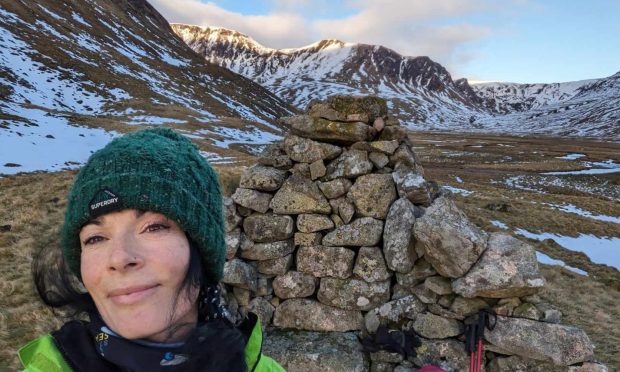
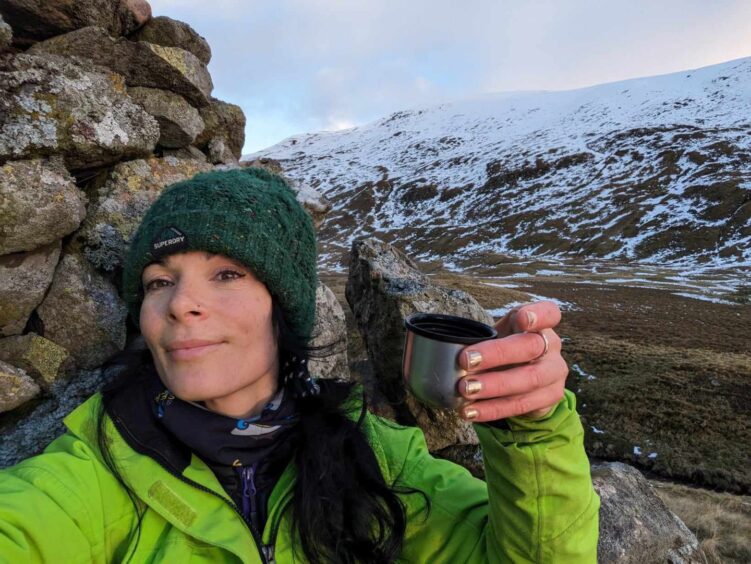
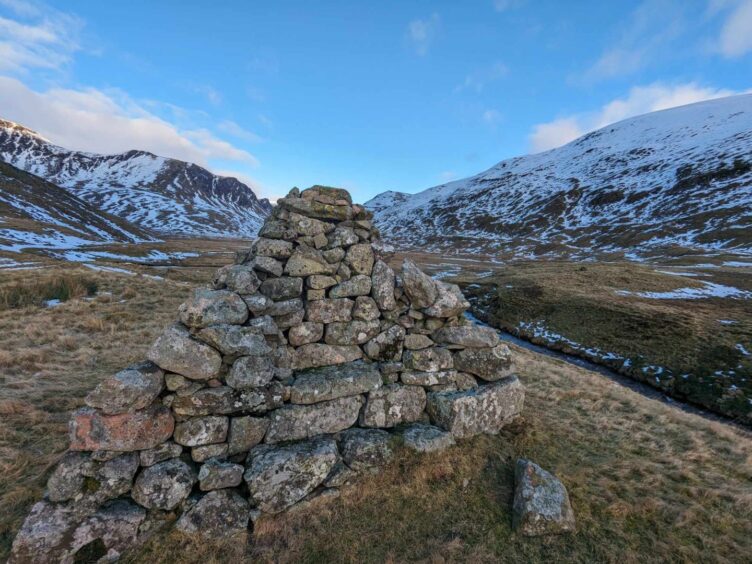


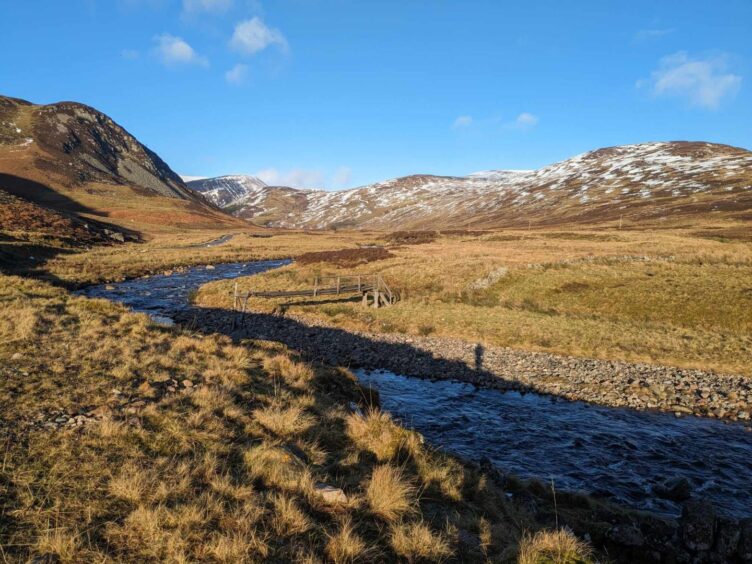
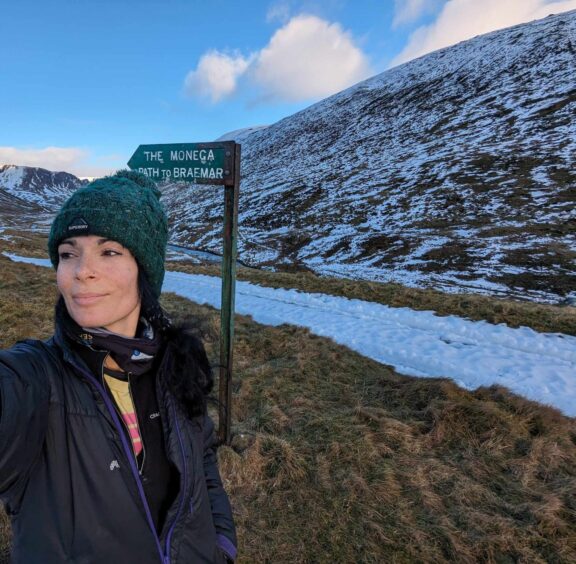
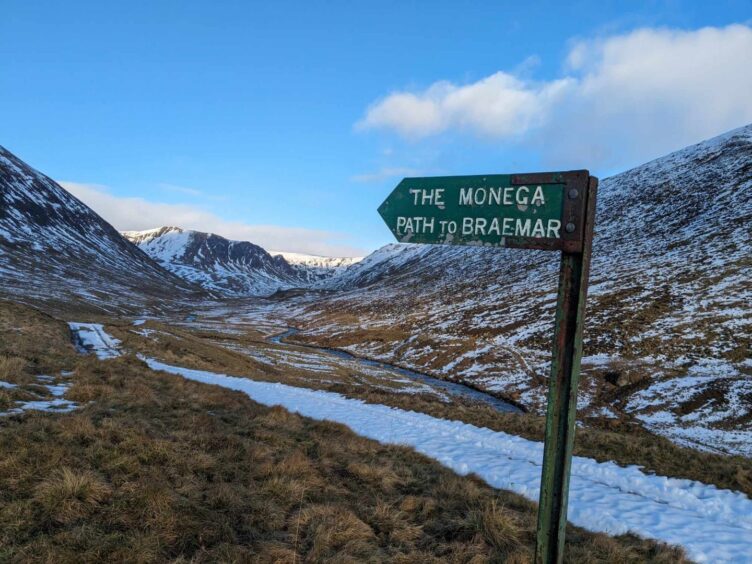
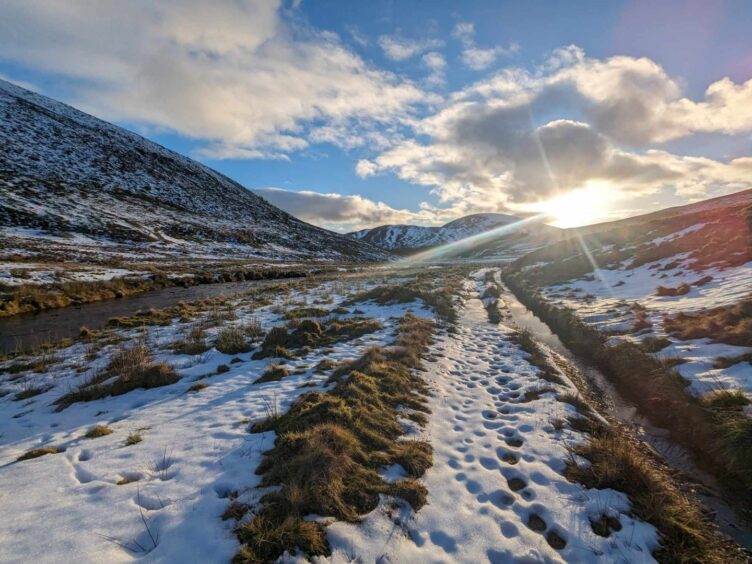
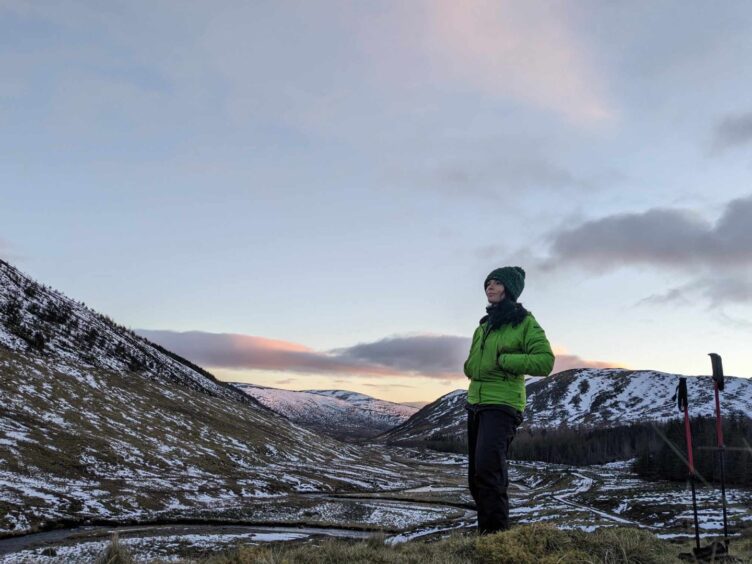











Conversation